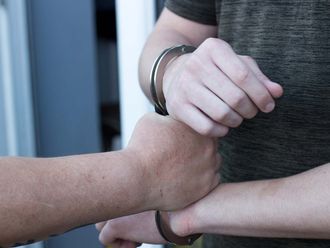ISLAMABAD: A suspected patient of Crimean-Congo hemorrhagic fever (CCHF) has got admission in the Pakistan Institute of Medical Sciences (PIMS) with symptoms of disease.
According to hospital sources, the blood samples of patient Mohammad Altaf from Kashmir were sent to the National Institute of Health (NIH) and he was moved to the isolation ward of the hospital.
Dr Wasim Khawaja, a public health specialist at the Pakistan Institute of Medical Sciences (PIMS) said that majority of cases have occurred in people involved in the livestock industry, such as agricultural workers, slaughterhouse workers and veterinarians.
He said human-to-human transmission can occur resulting from close contact with the blood, secretions, organs or other bodily fluids of infected persons. Hospital-acquired infections can also occur due to improper sterilisation of medical equipment, reuse of needles and contamination of medical supplies, he added.
He said following infection by a tick bite, the incubation period is usually one to three days, with a maximum of nine days.
The incubation period following contact with infected blood or tissues is usually five to six days, with symptoms including fever, muscle ache, dizziness, neck pain and stiffness, backache, headache, sore eyes and photophobia (sensitivity to light).
He said there may be nausea, vomiting, diarrhoea, abdominal pain and sore throat early on, followed by sharp mood swings and confusion.
After two to four days, the agitation may be replaced by sleepiness, depression and lassitude, and the abdominal pain may localise to the upper right quadrant, with detectable hepatomegaly (liver enlargement), he added.
He said that the CCHF virus is transmitted to people either by tick bites or through contact with infected animal blood or tissues during and immediately after slaughter.
Dr Khawaja said in order to reduce the risk of animal-to-human transmission people should wear gloves and other protective clothing while handling animals or their tissues in endemic areas, notably during slaughtering, butchering and culling procedures in slaughterhouses or at home.
He added to reduce the risk of human-to-human transmission in the community, people should avoid close physical contact with CCHF-infected people, wear gloves and protective equipment when taking care of ill people and wash hands regularly after caring for or visiting ill people.












